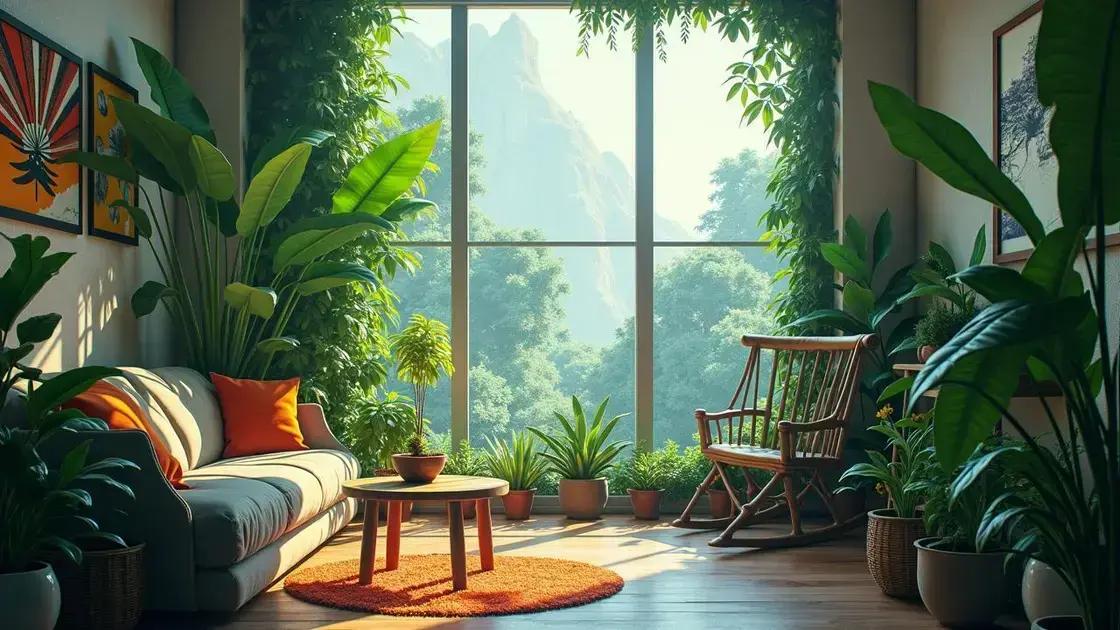How to Care for an Indoor Plant: 5 Essential Tips for Thriving Greens
How to care for an indoor plant can sometimes feel overwhelming, but with the right guidance, you can create a flourishing green sanctuary in your home. It all starts with understanding your plant’s specific needs, from light to water, which can dramatically improve their health and vitality. Let’s explore these essential tips that will transform your indoor garden into a vibrant, thriving space.
Table of Contents
ToggleEssential watering schedule for indoor plants
How to care for an indoor plant includes establishing an effective watering schedule that is crucial for your plant’s health and growth. Proper hydration helps prevent issues such as root rot and leaves that wilt or discolor.
Understanding your plant’s needs
Every indoor plant species has unique water requirements based on factors like size, species, and growing conditions. Here are some essential tips:
- Check the soil moisture regularly.
- Water when the top inch of the soil feels dry.
- Use room temperature water to avoid shocking the plant.
Watering frequency
Your watering schedule will vary depending on the season, the type of plant, and the conditions in your home. Here’s a basic guideline:
- Spring & Summer: Most plants need watering every 1-2 weeks.
- Fall & Winter: Reduce watering frequency to every 2-4 weeks.
Signs your plant needs water
Look for these indicators to determine if your plant needs watering:
- Leaves are droopy or wilted.
- Soil pulls away from the edges of the pot.
- Lower leaves turn yellow or fall off.
Watering techniques
Different plants may require different watering methods. Here are a few techniques:
- Bottom watering: Place pots in a tray of water to allow the soil to absorb moisture from below.
- Drip irrigation: Use a drip system for consistent moisture.
- Self-watering pots: These pots have a reservoir that allows plants to draw water as needed.
Additional resources
To learn more about nurturing a variety of indoor plants, consider exploring indoor gardening techniques for detailed insights.
Optimal soil requirements for growth

Optimal soil requirements for growth are essential to ensure that your indoor plants thrive in their environment. The right soil mix can provide essential nutrients, adequate drainage, and air circulation, which are vital for root health.
Key components of soil
The soil composition plays a crucial role in supporting your indoor plants. The following components contribute to optimal growth:
- Organic matter: Improves nutrient availability and soil structure.
- Drainage material: Promotes water flow and reduces the risk of root rot. Common materials include perlite and vermiculite.
- pH level: Most indoor plants prefer a pH between 6.0 and 7.0.
Choosing the right soil mix
Various plants have different soil requirements. Here’s a quick guide:
- Cacti and succulents: A well-draining mix, often blended with sand.
- Tropical plants: A moisture-retentive soil with organic matter, like peat moss.
- Herbs: A balanced potting mix that offers good drainage and nutrient content.
Testing and amending your soil
Regularly testing your soil can ensure it meets your plants’ needs. Here are some methods:
- Use a soil test kit to check for nutrient levels and pH.
- Add amendments such as compost or lime to adjust nutrient availability and pH levels.
Advanced resources for plant care
For deeper insights into caring for your indoor plants, consider exploring indoor gardening techniques for expert advice.
Sunlight exposure tips to boost your plants
Sunlight exposure tips to boost your plants are essential for maintaining their health and vitality. Understanding how much light your indoor plants get can dramatically impact their growth and well-being.
Assessing light conditions in your home
Different areas of your home receive varying amounts of sunlight. Here’s how to determine if your plants are getting adequate light:
- Observe the direction of your windows; south-facing windows generally receive the most light.
- Check for shadows and brightness throughout the day.
- Note seasonal changes in sunlight exposure.
Best types of sunlight for indoor plants
Understanding the right type of light can help you place your plants correctly. Here are the main light categories:
- Direct sunlight: Ideal for sun-loving plants like succulents and cacti.
- Partial sunlight: Suitable for moderate-light plants such as ferns and snake plants.
- Indirect sunlight: Perfect for low-light varieties like pothos and peace lilies.
Tips for maximizing sunlight exposure
To optimize light exposure and foster healthy growth:
- Rotate your plants weekly to ensure even growth.
- Use sheer curtains to diffuse harsh sunlight.
- Position plants closer to windows but avoid drafty areas.
Additional resources for plant care
For more insights on caring for your indoor plants and maximizing their growth potential, consider exploring indoor gardening techniques for expert guidance.
In conclusion
Caring for indoor plants can transform your living space into a vibrant and healthy environment. By understanding their watering schedules, soil requirements, and sunlight exposure, you can ensure that your greens thrive. Remember, each plant has unique needs, so take the time to observe and adjust your care routine accordingly. For additional tips on enhancing your indoor garden, don’t hesitate to check out tips on enhancing your indoor garden, which can help you cultivate a flourishing space.

